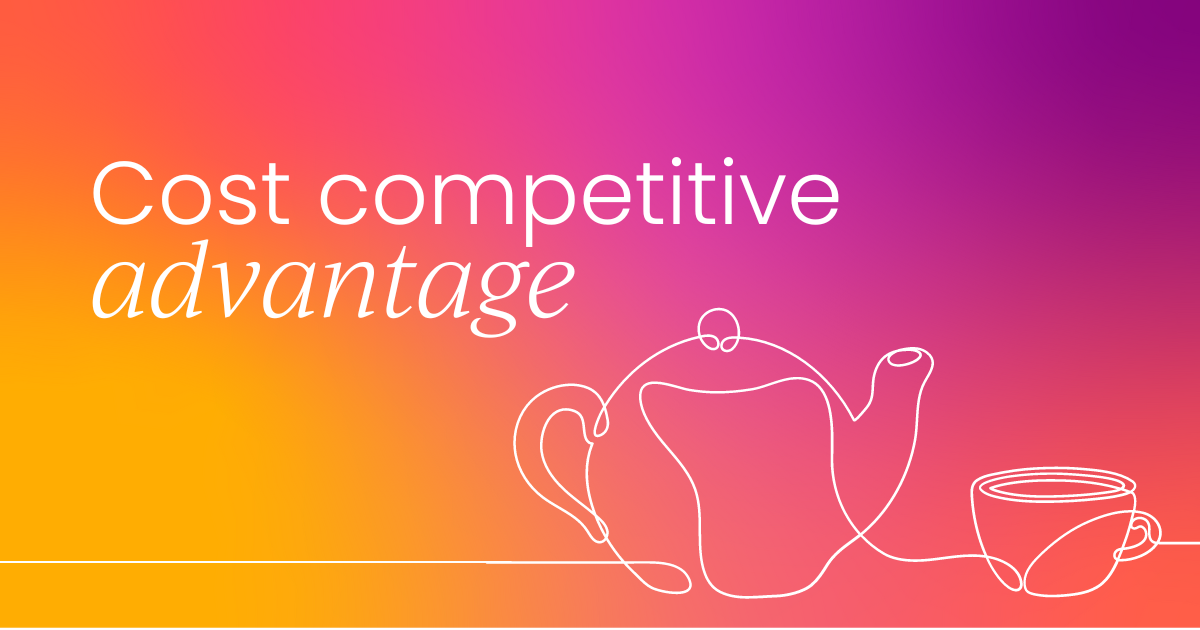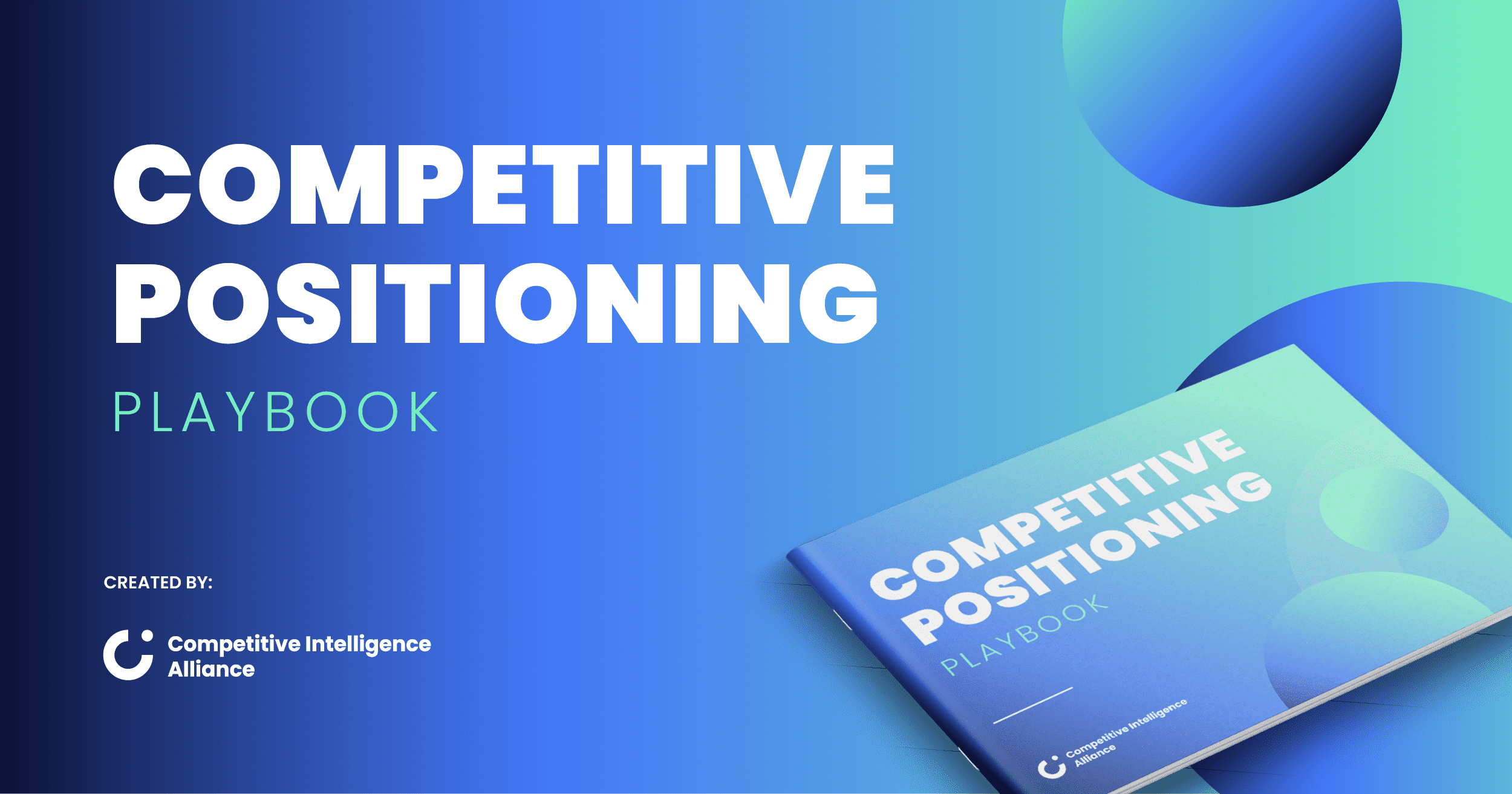It’s become increasingly clear that, to stay ahead, you need a proactive strategy.
That’s exactly what Michael Porter’s Generic Strategies offer.
These aren’t just theoretical concepts; they are actionable frameworks that, when integrated with your competitive intelligence (CI) program, can transform how your business competes and wins in the market.
By the time you finish reading this article, you’ll hopefully have a clear roadmap for applying these strategies and gain insights from real-world examples and experiences on how I’ve successfully applied these frameworks in my work.
Whether it was helping a SaaS company sharpen its differentiation strategy or enabling a health tech startup to achieve cost leadership, I’ve seen firsthand how Porter’s strategies, when paired with robust competitive intelligence, can transform a business.
Let's dive into how you can make Porter’s strategies work for you.
Understanding Porter’s generic strategies
Michael Porter, a pioneer in the field of competitive strategy, introduced the concept of Generic Strategies in his seminal work "Competitive Advantage: Creating and Sustaining Superior Performance".
These strategies are based on two key dimensions: competitive advantage (cost leadership vs. differentiation) and competitive scope (broad vs. narrow target market). Porter identified three main strategies that businesses can use to achieve a competitive advantage: Cost Leadership, Differentiation, and Focus.

Cost Leadership: This strategy revolves around becoming the lowest-cost producer in the industry. Companies that successfully implement a cost leadership strategy can offer their products or services at a lower price than competitors, thereby attracting price-sensitive customers.
Differentiation: In contrast to cost leadership, the differentiation strategy focuses on creating unique products or services that stand out in the market. This uniqueness can be achieved through superior quality, innovative features, exceptional customer service, or brand reputation.
Focus: The focus strategy involves targeting a specific segment of the market, whether it’s a niche group of customers or a particular geographic area. This strategy can be further divided into cost focus (offering lower prices to a niche market) or differentiation focus (offering specialized products or services to a niche market).
Integrating Porter’s strategies with competitive intelligence
In one instance, I was tasked with building a competitive intelligence program from the ground up at a SaaS company. The challenge was to not only gather and analyze data but to use it to create actionable strategies that would drive our market positioning.

This is when I quickly realized that I could simply look to Porter’s Generic Strategies to craft a unique CI program. This meant using the insights gathered about competitors, customers, and market trends to enhance my strategic decision-making.
So, let’s now look at each strategy that could support your CI program.
Cost leadership
To succeed in cost leadership, you need to continuously monitor the market for opportunities to reduce costs.
This is where competitive intelligence comes in.
You can identify best practices and potential cost-saving measures by analyzing competitors' pricing strategies, supply chains, production processes, and operational efficiencies.

For instance, if a competitor has optimized their cloud infrastructure, your CI efforts should aim to understand the impact of this optimization on the market. You should investigate how similar efficiencies can be achieved—whether through negotiating better terms with cloud providers, adopting more efficient coding practices, or leveraging containerization and microservices to reduce resource usage.
At one of the SaaS companies I worked for, I optimized our company’s cost structure (pricing plans) after my CI research revealed that a major competitor had altered their pricing strategy to attract budget-conscious clients.
I led a small cross-functional team to explore similar optimizations in our pricing tiers, strategically segmenting our offerings to suit different target personas and enhance our competitive advantage.
While these efforts didn’t necessarily revolutionize our pricing, we aimed to offer slight but meaningful price reductions and improved segmentation to help us stay competitive and better align with our customers.
And we managed to do just that.
Differentiation
Differentiation is all about standing out, and competitive intelligence helps identify opportunities for this.
By analyzing competitors' offerings, customer feedback, and market trends, you can pinpoint gaps in the market where your products or services can excel.
Consider a scenario where competitive intelligence reveals that customers are increasingly dissatisfied with the customer service offered by your competitors. This insight could lead you to invest in superior customer service as a differentiator. Alternatively, if competitive intelligence shows a growing demand for eco-friendly products, you might explore ways to enhance your product’s environmental credentials.

In fact, here’s an example directly related to the above point, taken from my time working in a digital adoption platform company.
Our competitive intelligence revealed that competitors failed to deliver a personalized customer service experience. Recognizing this as a critical gap, we enhanced our onboarding process, developed specialized help resources, and ensured that our marketing materials highlighted this focus on a superior customer support experience.
While these adjustments were targeted, they helped differentiate us in a crowded market, steadily increasing customer satisfaction and retention.
Focus
The focus strategy requires a deep understanding of your target market segment, and competitive intelligence is vital for gaining this understanding.
By closely monitoring the specific needs, preferences, and behaviors of your target market, you can tailor your products, services, and marketing efforts to meet those needs more effectively than broader competitors.

For example, if you are targeting a niche market that values artisanal craftsmanship, competitive intelligence might reveal that competitors are increasingly automating their production processes. This insight could lead you to double down on your handcrafted approach, positioning your products as the premium choice for discerning customers.
To give you another example, while I was working within the health tech sector, competitive intelligence indicated that a niche market—mental health professionals—was under-served by our broader competitors.
Instead of making sweeping changes, I tailored our marketing and sales messages to better resonate with this specific group. By highlighting relevant features like privacy compliance and ease of use for telehealth, we saw a gradual increase in engagement from this segment. This focus allowed us to carve out a small yet growing presence in a specialized area that wasn’t getting much attention from larger players.
Some key takeaways
By integrating these strategies with competitive intelligence, you will not only gain a deeper understanding of the market landscape but also empower your organization to make informed and impactful decisions.
Here’s how you can turn this knowledge into action:
- Regularly audit costs: Establish a routine for analyzing your cost structure against competitors. Use competitive intelligence to identify new technologies or processes that could reduce costs and continuously seek out ways to streamline operations without sacrificing quality.
- Identify differentiation opportunities: Make it a priority to monitor customer feedback and market trends. Use these insights to continually refine your product or service offerings, ensuring they stand out in ways that truly matter to your target audience.
- Deepen market focus: Sharpen your focus on niche markets. Understand their evolving needs and preferences, and tailor your strategies to deliver unparalleled value that broad competitors can’t match.
- Integrate competitive intelligence into your strategic planning process: Set up systems that allow you to gather, analyze, and act on intelligence in real-time. This will not only help you maintain a competitive edge but also ensure your strategies are resilient and responsive to ever-changing markets.
Remember: The businesses that excel don’t just react to the market—they anticipate and shape it. And with the right combination of strategy and intelligence, your company can do just that.
Make sure your positioning is top notch too. Our playbook is designed to help you position yourself competitively, reposition where things aren't going your way, get buy-in across your org, and more.






.png?v=4917c1c27c)